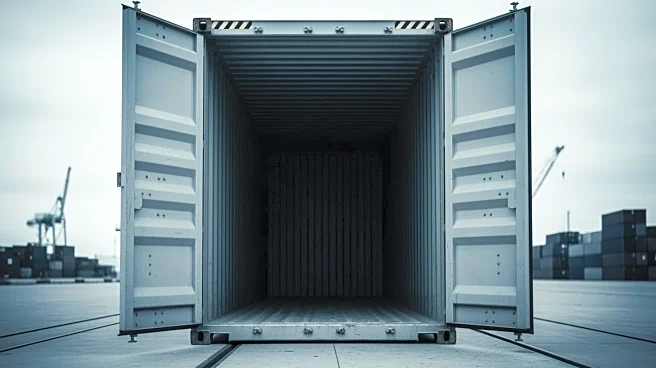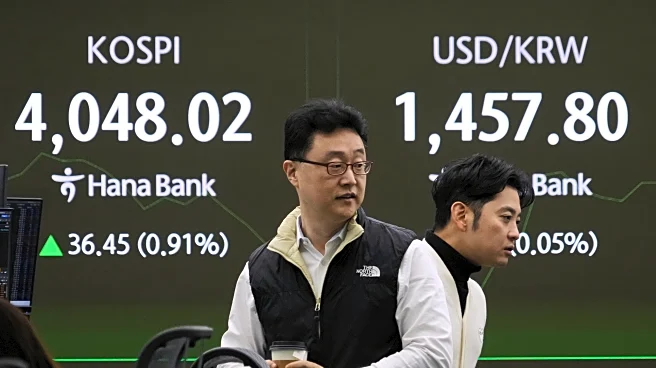What's Happening?
S&P Global Market Intelligence has reported a decline in United States-bound containerized freight imports for October, marking a 3.4% annual decrease to 2.71 million TEU (Twenty-Foot Equivalent Units).
This follows a sequential decline from September's 2.72 million TEU and previous months, reflecting a broader trend influenced by reciprocal tariffs enacted by the White House under the International Emergency Economic Powers Act. Despite a year-to-date increase of 2.5% in imports, the fourth quarter is projected to see a 14.4% annual decline, with the downturn expected to persist through the third quarter of 2026. Imports from Asia, particularly mainland China, are anticipated to fall by 23.2%, while imports from the EU may rise slightly due to a new trade deal with the U.S. Automotive parts and home appliances saw increases, whereas consumer electronics experienced a significant decline.
Why It's Important?
The decline in U.S.-bound imports has significant implications for various sectors, including manufacturing and retail. Overbuilt inventories may lead to a slowdown in supply chain activity, affecting trade dynamics and economic performance. The tariffs and trade deals are reshaping import patterns, with potential impacts on pricing and availability of goods. Companies may face challenges in inventory management and promotional strategies, influencing consumer behavior and sales. The broader economic landscape could see shifts in trade policy, with new deals potentially altering long-term planning and strategic investments.
What's Next?
As the import downturn continues, stakeholders in the supply chain and trade sectors will need to adapt to changing conditions. Companies may focus on inventory management and promotional strategies to mitigate the impact of reduced imports. Trade policy developments, including new deals with Switzerland and Central American nations, could influence future import patterns. The first quarter of 2026 is expected to be challenging, with historical uncertainties requiring strategic adjustments. Long-term planning and investments may become more prominent as companies navigate these changes.
Beyond the Headlines
The decline in imports and the associated trade dynamics highlight broader economic and geopolitical shifts. The implementation of tariffs and trade deals reflects ongoing negotiations and strategic positioning in global trade. These developments may influence international relations and economic policies, with potential long-term effects on trade partnerships and economic growth. The adaptation of supply chains to new tariffs and trade agreements underscores the resilience and flexibility required in the current economic environment.














